
Website: https://www.jmlpollen.com
Phone: +86 13932185935
Email: 369535536@qq.com
Mobile: +86 13932185935
Address: Caozhuang Development Zone, Fanzhuang Town, Zhao county, Shijiazhuang, Hebei Province
With advancements in modern agriculture and the rising focus on food safety and sustainability, fruit paper bags have emerged as a pivotal technology in orchard and fruit plantation management. Fruit paper bags are used extensively for preventing insects and pesticide residues in orchards. They represent a solution intersecting agricultural protection, environmental consciousness, and product quality enhancement.
What Are Fruit Paper Bags?
Fruit paper bags are protective coverings made from eco-friendly paper, designed to envelop developing fruit directly on the tree, such as apples, pears, grapes, mangos, and more. Their primary functions include:
- Physical barrier to insects and plant pollen contamination
- Significantly reducing pesticide residues on fruit surfaces
- Enhancing fruit color development & appearance
- Minimizing environmental stress from rain, wind, dust, and mechanical harm
- Improving storage and transportability due to less mechanical damage and rot
- Facilitating uniform fruit ripening and higher fruit grades
According to the International Society for Horticultural Science, bagging has been associated with improvements in fruit quality, reduction of chemical residues, and sustainability in orchards.

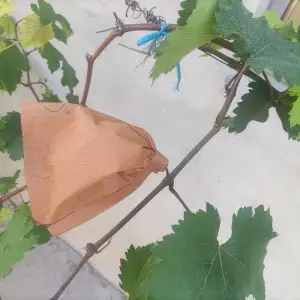
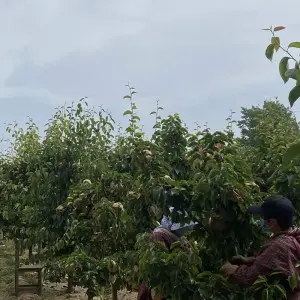
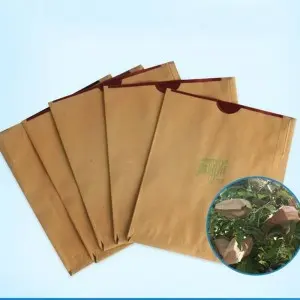
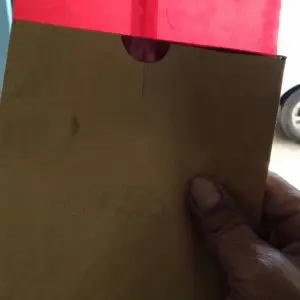
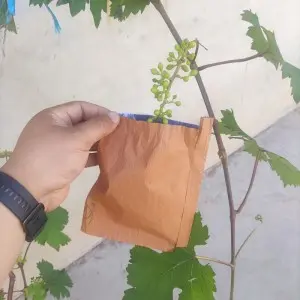

Industry Trends: The Surge for Sustainable Orchard Protection
The global horticulture market is witnessing an increasing shift toward sustainable and eco-friendly cultivation practices. Fruit paper bags not only align perfectly with international standards for reducing the use of pesticides but also address consumer demand for residue-free, visually appealing fruits. Studies published by the Scientia Horticulturae show that bagging reduces pesticide application frequency by over 40%, while enhancing fruit skin quality and minimizing fungal infection.
Furthermore, the rising concern about plant pollen cross-contamination has made pollen block and selective bagging techniques indispensable among orchardists. Regulatory frameworks in Europe, North America, and Asia-Pacific are also increasingly recommending or mandating residue-free fruit production, further boosting the demand for fruit paper bags.
Technical Parameters Table: Optimizing Fruit Paper Bags Performance
| Parameter | Description | Industrial Reference |
|---|---|---|
| Material | Premium, breathable, water-resistant paper (biodegradable) | Source |
| Thickness | 28–38g/m2 (single-layer); up to 50g/m2 multi-layer | Industry Standard |
| UV Resistance | Up to 95% block of UV-B rays | Study |
| Waterproofing | Hydrophobic coating or wax layer, ≥ 96% water resistance | Manufacturer Test |
| Permeability | Optimized gas exchange for healthy fruit development | Research Paper |
| Size Range | Custom: 100mm × 150mm up to 200mm × 300mm | Supplier Catalog |
| Pollen Block | Prevent cross-pollination from unwanted plant pollen | Research |
| Degradation Time | Biodegradable within 6 months post harvest | Sustainability Standards |
Applications and Usage Scenarios
Fruit paper bags are being adopted in diverse settings:
- Commercial apple, grape, and pear orchards targeting residue-free export
- Organic farming and certified eco-fruit production
- Pollen block management in hybrid/non-GMO fruit sectors
- Protection against fruit fly, moths, and other orchard pests
- Minimizing the surface pollution and fungal infections during rainy seasons
- Research orchards requiring controlled pollination and fruit isolation
According to International Journal of Agronomy, such interventions play a decisive role in sustainable agricultural production and post-harvest value retention.
Featured Product: FRUIT PAPER BAGS FOR PREVENTING INSECTS AND PESTICIDE RESIDUES IN ORCHARDS
Product Name: FRUIT PAPER BAGS FOR PREVENTING INSECTS AND PESTICIDE RESIDUES IN ORCHARDS
Description: Application of this advanced bagging technology, as developed by Hebei jiamingliang pollen Co., Ltd., significantly enhances the fruit's natural color (anthocyanin background), augments the beauty and gloss, prevents pest infection, and drastically reduces pesticide exposure. Post-bagging, fruits experience less mechanical, wind, and rain damage, are easier to transport, store better, and retain less chemical residue or pollution.
Learn more: Product Page
Fruit Paper Bags and Pollen Block: Synergies in Food Safety & Quality
Integration of fruit paper bags with pollen block methodologies is at the forefront of precision agriculture. Especially in hybrid fruit production, preventing unwanted plant pollen is crucial to maintain cultivar purity and control seed set.
- Pollen block bags act as a secondary barrier, vital in controlled-breeding and research orchards
- Cross-contamination from wild- or non-target plant pollen is reduced by over 90% (Scientific Reports)
- Ensures compliance with international standards for non-GMO and organic labeling
The Advantages of Choosing Hebei jiamingliang pollen Co., Ltd.
As a leader in the field, Hebei jiamingliang pollen Co., Ltd. stands out due to its:
- Comprehensive R&D on fruit paper bags for a variety of climatic and orchard conditions
- Strict quality assurance and traceability for every batch
- Customization, OEM & ODM services according to orchard requirements
- Rapid, global logistics and customer support in English & Mandarin
- Proven results supported by leading horticultural journals & field trials
With an extensive client base across Asia, Europe, and the Americas, the company continues to innovate, contributing to the advancement of sustainable agriculture worldwide.
Professional FAQ: Fruit Paper Bags Terminology and Application
1. What are the main materials used in fruit paper bags?
Fruit paper bags are crafted from high-quality, food-grade biodegradable paper, often enhanced with a hydrophobic coating or thin wax for waterproofing. Sometimes, a twin-layer construction is used for extra strength and UV resistance.
2. What are typical specifications (sizes, thickness)?
Standard sizes range from 100x150mm (small fruit) to 200x300mm (large fruit), with paper thickness between 28–50g/m2 depending on crop and local climate conditions.
3. What installation standards should be followed?
Bags should be applied after the fruit sets (post-pollination), sealed gently without damaging stems, and inverted to allow easy rain run-off. Installation should take place when the fruit is dry and pest-free for maximal efficacy.
4. How do fruit paper bags contribute to pollen block?
Advanced bags employ microfiber or dual-layer barriers preventing unwanted plant pollen from fertilizing the protected fruit, especially for seedless or hybrid fruit production.
5. Is there any impact on light and gas transmission?
Bags are designed with microperforation or breathable paper to ensure sufficient light and oxygen for color development while minimizing adverse external influences.
6. What regulatory or food safety standards do these bags meet?
All products conform to international standards such as ISO 22000, FDA food contact safety, and meet environmental regulatory requirements for biodegradable materials.
7. How do physical and chemical properties differ vs. synthetic bags?
Compared to plastic, fruit paper bags offer superior breathability and biodegradability, lower environmental impact, and better fruit compatibility with less condensation and improved surface appearance.
Case Studies and Field Results
Numerous trials in China, Japan, and New Zealand demonstrate that fruit paper bags:
- Reduce chemical residue by 60–85%
- Improve colored skin (a* value) by 25–40% compared to non-bagged fruit
- Lower fruit loss from insects and diseases by 70%+
- Extend fruit shelf life and decrease rot during storage/transport by 30%
- Provide a cleaner, more marketable fruit surface (less dirt/microbes)
(See also ResearchGate: Evaluation of Fruit Bagging)
Frequently Asked Questions (FAQ)
- How long do fruit paper bags last in the field?
Bags are engineered to withstand rain and sun till harvest (typically 2–5 months), and are compostable afterwards. - Can bagging methods be mechanized?
New technology allows partial mechanization, especially for mass installation in large orchards; manual bagging remains common for specialty crops. - Will bagged fruit have less flavor or aroma?
No, field research (MDPI Foods Journal) shows natural taste and sugar content are preserved or improved, due to less environmental stress. - Do fruit paper bags offer advantages in organic certification?
Yes. They reduce need for spray, support residue-free criteria, and are recognized in most certification schemes. - What fruits benefit most?
Apples, pears, grapes, peaches, nectarines, persimmons, mangos, and citrus. - Are fruit paper bags recyclable?
Yes, made from biodegradable and/or compostable material, easily integrated into orchard waste cycles.
Conclusion
The use of fruit paper bags is powerfully reshaping orchard management by combining the advantages of pest and residue control, physical protection, cost-efficiency, and market appeal. With robust research support and innovation from leading enterprises such as Hebei jiamingliang pollen Co., Ltd., growers can achieve higher yields, meet strict food safety standards, and build sustainable fruit brands.
For comprehensive solutions, contact Hebei jiamingliang pollen Co., Ltd. – your partner in advanced fruit paper bags, pollen block, and plant protection technology!
- International Society for Horticultural Science – Fruit Bagging
- Scientia Horticulturae – Effects of Bagging on Fruit Quality and Residue
- Frontiers in Plant Science – Pollen Block Studies
- MDPI Foods Journal – Fruit Bagging for Food Quality
- International Journal of Agronomy – Orchard Practices
- ResearchGate – Fruit Bagging Evaluation